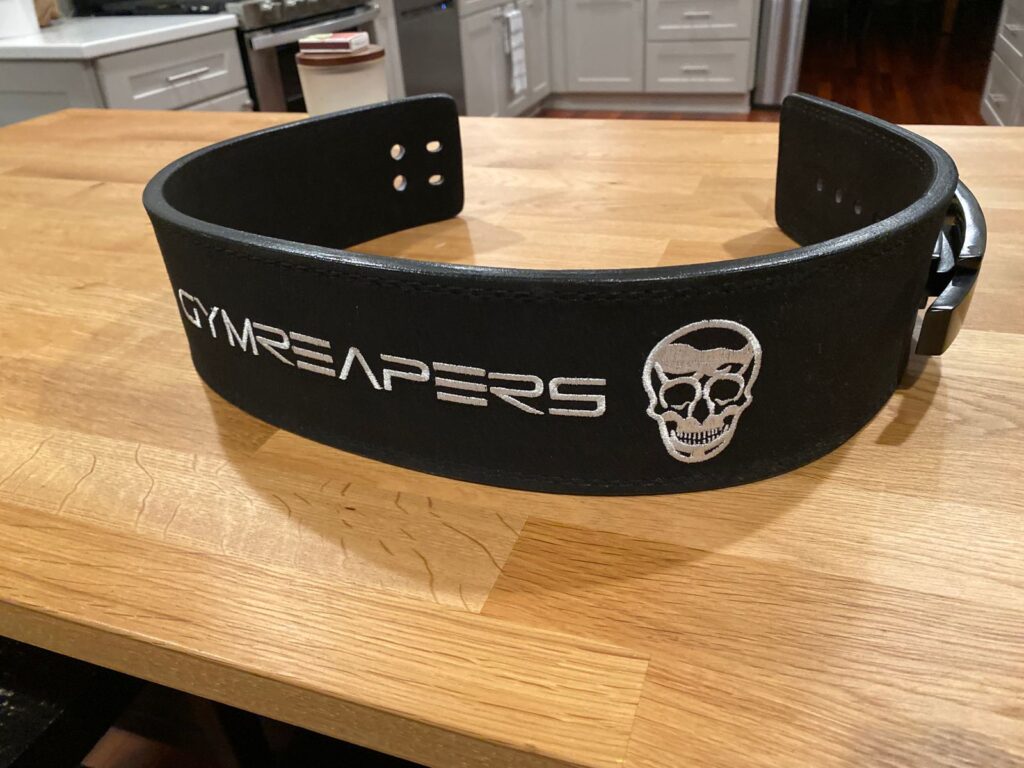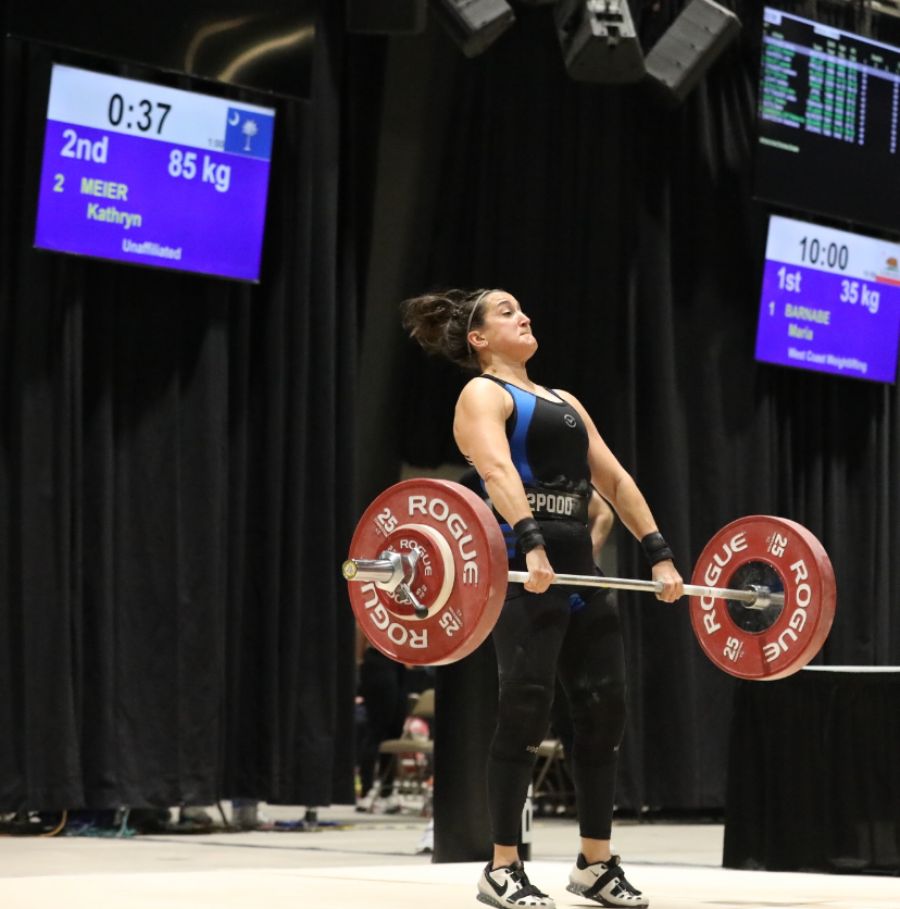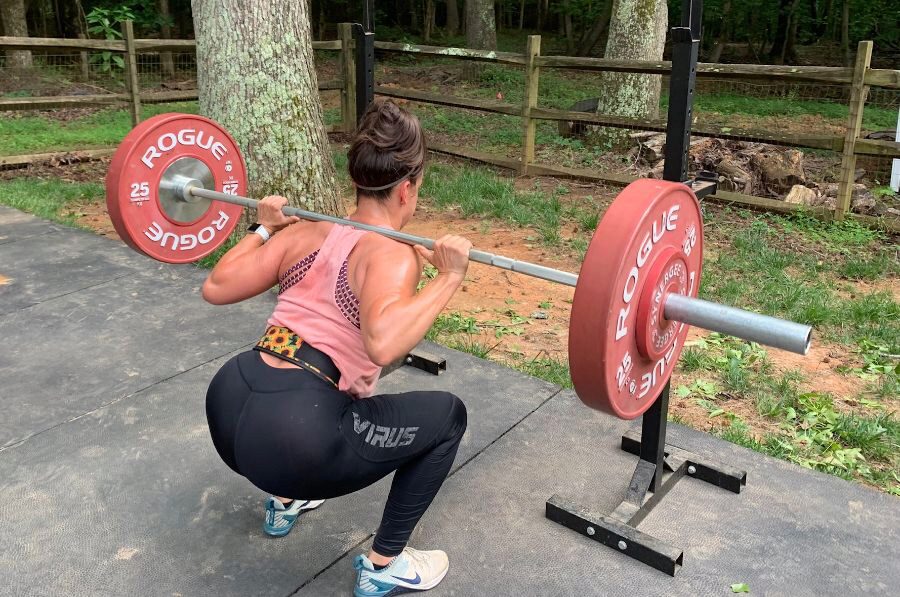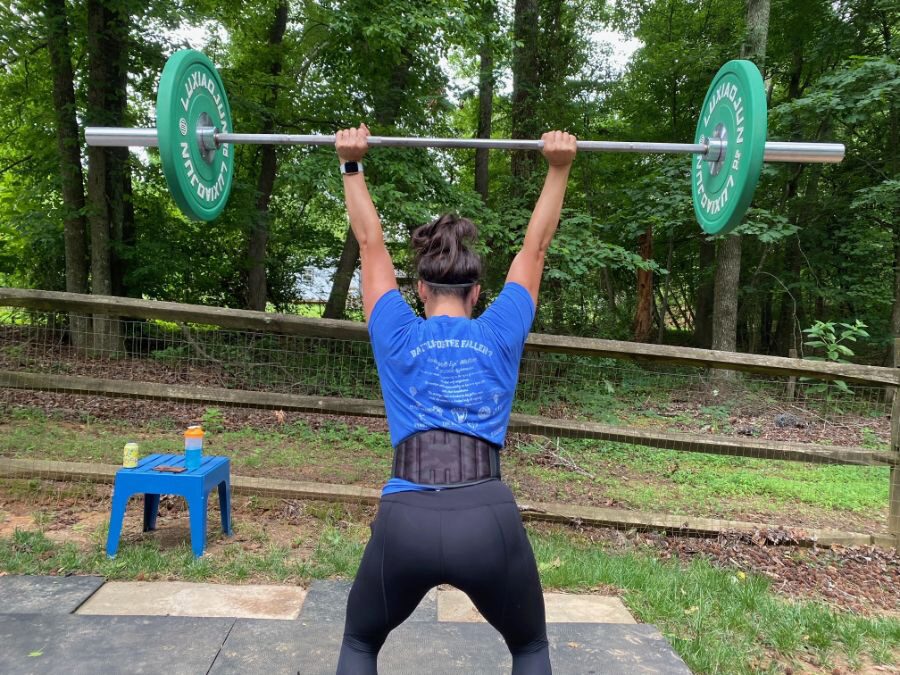We test and review fitness products based on an independent, multi-point methodology. If you use our links to purchase something, we may earn a commission. Read our disclosures.
You’re planted in front of the mirror at the gym with a good set of dumbbells, knocking out a set of bicep curls to get a good pump, when suddenly you see someone whip out a belt and slap it on like some kind of trendy fitness fashion accessory.
You’ve seen belts before, but you’re not entirely sure when to use a lifting belt, of even what they do. You’ve heard rumors, and now you have questions.
How does a small piece of nylon or leather actually help you lift heavy? Isn’t it just a gimmick, or a crutch that keeps you weak since it does all the work? Is it cheating?
The good news is that weightlifting belts are 100-percent legitimate, and many of the best lifters in the world utilize high-quality belts during their heaviest barbell lifts to help max out and keep the gains coming.
If you want to know more abouthow lifting belts work, take a deep breath and let’s dive right in!
What is a Weightlifting Belt?
A weightlifting belt, when used properly, provides important protection and stabilization to your back. During compound barbell lifts like the deadlift, the belt increases your intra-abdominal pressure by compressing the abdominal cavity, thus adding support to the front of the bones in the lower back.
According to a clinical trial for the journal Medicine & Science in Sports & Exercise1, the increased intra-abdominal pressure associated with the proper use of a lifting belt suggests it “may reduce disc compressive force and improve lifting safety” when lifting heavy weights.
The weight belt also adds an element of protection for overhead lifts like the overhead press, preventing hyperextension by restricting your back’s movements while also preventing inadvertent side-to-side movements or twisting.

Some of these benefits are provided by the belt itself when fastened properly, but some benefits are caused by our body’s response to the feel of the belt instead. The feeling of a rigid barrier around our torso causes us to be more cognizant of our posture, encouraging proper form through the lift.
Because of these benefits, the belt can decrease your risk of injury during heavy lifts by acting as a pseudo set of core muscles to help keep things tight when the going gets tough.
Who Should Wear a Weightlifting Belt?
Belts are best during rigorous rounds of barbell strength training, as they provide protection and may help increase your strength over time. In fact, a 2001 clinical trial completed for the Journal of Strength and Conditioning Research2 concluded that using a belt “may improve a lifter’s overall explosive power” thanks to the added stability provided by the belt.
For those participating in powerlifting, bodybuilding, Olympic weightlifting, or other intense forms of heavy weightlifting, a high-quality weight belt should provide many benefits.
Powerlifters and bodybuilders should invest in a good weightlifting belt to assist in lifting heavier weights over time and improving strength.
When to Wear a Weightlifting Belt
Belts don’t provide benefits on all lifts. Predominantly, they’re used for compound lifts, when lifters are in a standing position or hoisting the barbell overhead during clean and jerks or military presses. Lower body-focused lifts like the leg press, for example, will not require the use of a belt.
An exception to this mostly hard-and-fast rule, however, is the bench press. Lifters will still reap benefits of a lifting belt during the bench press because it helps stabilize your serratus anterior muscles, supports your bench press arch, and provides a confidence boost when pressing heavy loads.

To get the maximum effect of wearing a weightlifting belt during deadlifts, squats, overhead presses, and other lifts that benefit from some added spinal support, it’s crucial to slap it on at the right time.
First, work through your warm-up sets. On the last two or three sets before you get into the working sets, you’ll want to secure the belt around your midsection and bang them out. Sure, you don’t truly need the belt at such light weight, but a few quick sets before getting into the meat and potatoes of your work will get you and your body feeling familiar with that added support around your abdominal wall.
Once you scale up to your working sets or you’re testing a current or new one-rep max, the belt should be on. Make sure to fasten it properly and release it after the lift is complete.
RELATED: Deadlift Muscles Worked
How to Wear a Weightlifting Belt
In a 2023 observational study completed for the journal Medicine3 researchers concluded that the use of weightlifting belts could reduce knee flexion, thus improving lifting mechanics and “decreased perceived exertion.”
A properly fastened belt will help create better biomechanics during heavy lifting while also protecting against back pain. Likewise, an incorrectly fastened belt yields no benefit whatsoever.
Here’s how to wear your belt properly to reap the maximum reward from its use.
- Place the belt around your waist. Ideally, it will sit in the belly button area above the hip bone.
- Inhale slightly and tighten the belt. Remember that you will be exhaling into the belt, so you need some space to allow your stomach to expand. A good way to check if it’s fastened just right involves slipping one finger into the back of the belt. Any more and the belt is too loose. If you can’t get even one finger in, it’s too tight.
- Breathe during your lifts to expand into the belt. This style of forceful exhalation is called the “Valsalva maneuver” and it will help provide additional core stability when used in combination with a well-fitted weight belt.
Whether you’re wearing a nylon belt that uses velcro to fasten or a durable leather belt that uses a double-prong or single-prong buckle to stay in place, make sure you position the belt properly and secure it just tight enough.

Ensuring your belt is being worn correctly, you should enjoy improved core strength during your heavy lifts and push towards bigger PRs in due time.
Good luck out there, friends!
When To Use a Lifting Belt FAQs
Do weightlifting belts help you lift more weight?
Weightlifting belts can help you lift more weight, yes. They accomplish this by providing protection to your lower back, increasing intra-abdominal pressure, encouraging good posture, and improving your confidence when lifting heavy weights.
Should I wear a weightlifting belt for Olympic lifting?
Some lifters like a weightlifting belt when completing Olympic lifts. While we find the belt useful during the clean and jerk, it’s generally recommended not to use a belt during the snatch.
Can you wear a weightlifting belt for CrossFit?
Weightlifting belts can be useful for CrossFit, but it totally depends on the WOD. For WODs that revolve around heavy lifting or have minimal variety, like Grace, a belt should provide some assistance.
Likewise, a weight belt might act more like an impediment during WODs where you mix weightlifting, calisthenics, and cardio since you have to squander precious seconds to put it on and take it off between lifts.
When should I start wearing a weightlifting belt?
If you are a casual lifter or tend to lift at or below your bodyweight, you may never need a weightlifting belt if you focus on form and build excellent biomechanics.
On the other hand, if you are obsessed with maxing out what’s on the barbell or want to compete in powerlifting, bodybuilding, or Strongman competitions, you’ll want to invest in a high-quality weightlifting belt, like those made by Inzer or SBD, as soon as possible.
References
1. Harman EA, Rosenstein RM, Frykman PN, Nigro GA. Effects of a belt on intra-abdominal pressure during weight lifting. Med Sci Sports Exerc. 1989;21(2):186-190.
2. Zink AJ, Whiting WC, Vincent WJ, McLaine AJ. The effects of a weight belt on trunk and leg muscle activity and joint kinematics during the squat exercise. J Strength Cond Res. 2001;15(2):235-240.
3. Fong SSM, Chung LMY, Gao Y, Lee JCW, Chang TC, Ma AWW. The influence of weightlifting belts and wrist straps on deadlift kinematics, time to complete a deadlift and rating of perceived exertion in male recreational weightlifters: An observational study. Medicine (Baltimore). 2023;101(7):e28918. doi:10.1097/MD.0000000000028918
Further reading

Break a sweat with our expert-tested picks for the best punching bags. Read more

Garage Gym Reviews has an exclusive Pepin coupon code to save on a barbell and dumbbell stand, as well as information on how to save on other Pepin products. Read more

In our LPG Muscle Shrug Pro review, we’ll detail how these free weight stands can help promote strength and athleticism for home gym owners of all levels. Read more

The best pre-workouts for beginners will allow you to work your way up to clinical doses of key pre-workout ingredients for focus, energy, and endurance. Read more

